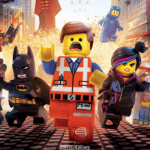Table of Contents
Intro
Love them or hate them, movie trailers are an integral part of the proper moviegoing experience. When you go to the movies, you can expect to see numerous trailers for upcoming films that are generally aimed at the same age range the movie you’re about to see is. Trailers are essentially commercials; short advertisements about two or so minutes meant to draw up interest in upcoming films that moviegoers might be interested in seeing. Does this movie look good? Does it seem right up my alley? Or is it something that I’d never willingly pay to see? It’s the nature of advertising in Hollywood; if you’ve got people paying to go to the movies, it only makes sense to show them what else they might be willing to pay to see. As movies have evolved over time, so have movie trailers. Present-day Hollywood trailers barely resemble those of the 60s…nor do they resemble the ones from the 80s. Heck, even 90s trailers seem pretty different than the ones that exist now. But in what exact ways are they different? And for that matter, what ways are they similar? Let’s go back in time for a moment and take a look…
Note that I won’t be going into the whole history of movie trailers and how they came to be – there are people far more capable of doing just that than I am – instead, I’ll just be focusing on how the trailers themselves changed and evolved over time. For simplicity’s sake, I also won’t talk about theatrical teasers, as they don’t always fit the same formula that the main trailers I wish to discuss do.
Things to do:
- Subscribe to The Hollywood Insider’s YouTube Channel, by clicking here.
- Limited Time Offer – FREE Subscription to The Hollywood Insider
- Click here to read more on The Hollywood Insider’s vision, values and mission statement here – Media has the responsibility to better our world – The Hollywood Insider fully focuses on substance and meaningful entertainment, against gossip and scandal, by combining entertainment, education, and philanthropy.
In a World…
When watching Hollywood movie trailers, it’s easy to spot patterns between them. So easy in fact, that they’ve become a heavy subject of parody. Being everywhere from YouTube videos to kid’s cartoons, it’s more than likely you’ve seen your fair share of trailer parodies. This is due to recurring similar elements often found in Hollywood movie trailers; various trailerisms that have been parodied and poked fun at for the past few decades. Whether it be the cheesy, dramatic announcers that were wildly prevalent up until the early 2000s, or the more recent trend of emotional somber, “epic” renditions of hit songs that often come across as melodramatic, certain aspects of trailers almost always lend themselves to some form of mockery or another, often making them feel repetitive and same-y. But advertising is advertising and studios have to market their films somehow. At the end of the day, there’s a way to market movies, and when advertisers find formulas that work, of course, they’re going to use them.
The Early Days of Film
Around the time trailers became commonplace in the early days of movies with sound, they often took on a very bombastic tone, with dramatic music over clips of the movie being advertised. These trailers would either use text overlays or narration that contributed to the overall emphasis on the spectacle they carried. Text overlays would make frequent use of exclamation points, while voiceovers spoke with excitement. The names of the main cast would also be displayed, generally toward the trailer’s end. Sometimes trailers would focus more on the production of the films being advertised instead of the films themselves. The original trailer for ‘Snow White and the Seven Dwarves’ didn’t even feature any footage from the movie itself; instead, it quotes a piece from TIME magazine before Walt Disney himself introduces the titular dwarves. The 1949 film ‘The Heiress’ similarly tries to garner up hype by introducing the cast and the director rather than talking about the story itself. While it’s easy to see why this particular style of advertising didn’t last long, it does serve as an interesting time capsule.
WATCH THE TRAILER of the Film and the Revolution: ‘Can I Go Home Now?’
The Children Around the World Continue to Ask the question
Narration was also in full force at this time.
Middle Ground: The ‘60s to the ‘80s.
Later on down the line, as films began to incorporate pop music, so did their trailers. ‘The Graduate’ makes use of songs like Simon & Garfunkel’s “The Sound of Silence”, which is reflected in its trailer. Trailers also became a little less dramatic at this time, which was understandable, as film had become a mainstay in pop culture at this point, with little reason to hype it up as much. But going back to music, one particular trend I’ve noticed in ‘80s movie trailers is the use of single songs that play through out the entire trailer. This often gives ‘80s trailers an almost laidback nature, like they’re not trying to be super cool and flashy with fast-paced edits. They’re doing exactly what a trailer is set out to do: pique the viewer’s interest by giving them an idea of the movie’s overall tone and feel. Is it an outrageous slapstick comedy? Is it a suspenseful thriller? Or is it a romantic drama? It’s easy to see why this exact style didn’t last that long, and I can also see some people finding it a bit cheesy when it comes to the narration, but it’s an approach that I honestly kind of like.
Related article: – Want GUARANTEED SUCCESS? Remove these ten words from your vocabulary| Transform your life INSTANTLY
Related article- A Tribute To The Academy Awards: All Best Actor/Actress Speeches From The Beginning Of Oscars 1929-2019
‘90s and 2000’s
By the time the ‘90s rolled around, the production value on theatrical trailers had increased quite a bit. During this period, they were heavily edited in a way that made them feel more “alive”. One aspect that had evolved was the sound design; instead of just a series of clips with narration and a song playing over them, many trailers would combine narration with lines or scenes from the films themselves that helped convey the premise. There would also often be more than one song used; some trailers would use around two to three different pieces of music throughout the trailer, with songs changing depending on the mood. A comedy trailer could start out with a serene piece of music, until the trailer revealed the comedic elements of the film, leading to quickly-cut scenes of slapstick accompanied by more frantic music. And speaking of music, another curious trend that popped up during this time was the use of film scores from often unrelated films. There were too many examples of this to list, but to give just one, the score track “Bishop’s Countdown” from ‘Aliens’ became known for being used often. By the end of the 2000s, however, this became extremely rare.
The 2010 and Onward: Narration Fades Out
The trailer for Christopher Nolan’s film ‘Inception’ was revolutionary in a way that it probably wasn’t meant to be. The dramatic horn (taken from the film’s score itself) was so iconic that many trailers began to incorporate music with similar “epic” sounds in a sort of modern-day equivalent to what early trailers did. If a Hollywood film has action or adventure elements, chances are its trailer tries to make it look as grand as possible. But even if the tone of the movie isn’t “epic”, trailers in this day and age are often extremely flashy, with lots of music and snappy editing. Curiously enough, narration also seems to have largely become a thing of the past, with just about every new trailer largely relying on lines from the film, and while text screens are still occasionally used, even they take a backseat to the consistent use of quotes and clips that are used to relay the premise of the film in question.
Related article: EVOLUTION: Every Ryan Gosling Role From 1995 to 2020, All Performances Exceptionally Poignant
Related article: EVOLUTION: Every Henry Cavill Role From 2001 to 2021, All Performances Exceptionally Poignant
Related article: All Best Actor/Actress Speeches From The Beginning Of Oscars 1929-2019 | Hollywood Insider
Related article: The 2022 NAACP Image Awards: Full List of Nominees, A History of the Ceremony, and How to Vote
And That’s a Wrap!
I do understand that this brief look at how movie trailers have changed over time wasn’t the most in-depth ever, but I do like exploring these sorts of things. In a way, the style and energy of trailers from each time period do often reflect that of the movies themselves, and that’s what I feel makes reflecting on the topic so interesting. Regardless of which decade is your favorite, or which is your least favorite, observing the different kinds of patterns and trends seen in trailers over the course of film history can give one a new appreciation for what certain time periods gave us. I’m sure there are plenty of people out there that miss voiceovers, no matter how much they’ve been parodied in pop culture, and I’m also sure there are people that favor the aforementioned refrained nature of 80’s trailers. Regardless, movie trailers aren’t going anywhere anytime soon, and we can only wonder what trailers in the next decade and onward will look like.
By Austin Oguri
Click here to read The Hollywood Insider’s CEO Pritan Ambroase’s love letter to Cinema, TV and Media. An excerpt from the love letter: The Hollywood Insider’s CEO/editor-in-chief Pritan Ambroase affirms, “We have the space and time for all your stories, no matter who/what/where you are. Media/Cinema/TV have a responsibility to better the world and The Hollywood Insider will continue to do so. Talent, diversity and authenticity matter in Cinema/TV, media and storytelling. In fact, I reckon that we should announce “talent-diversity-authenticity-storytelling-Cinema-Oscars-Academy-Awards” as synonyms of each other. We show respect to talent and stories regardless of their skin color, race, gender, sexuality, religion, nationality, etc., thus allowing authenticity into this system just by something as simple as accepting and showing respect to the human species’ factual diversity. We become greater just by respecting and appreciating talent in all its shapes, sizes, and forms. Award winners, which includes nominees, must be chosen on the greatness of their talent ALONE.
I am sure I am speaking for a multitude of Cinema lovers all over the world when I speak of the following sentiments that this medium of art has blessed me with. Cinema taught me about our world, at times in English and at times through the beautiful one-inch bar of subtitles. I learned from the stories in the global movies that we are all alike across all borders. Remember that one of the best symbols of many great civilizations and their prosperity has been the art they have left behind. This art can be in the form of paintings, sculptures, architecture, writings, inventions, etc. For our modern society, Cinema happens to be one of them. Cinema is more than just a form of entertainment, it is an integral part of society. I love the world uniting, be it for Cinema, TV, media, art, fashion, sport, etc. Please keep this going full speed.”
More Interesting Stories From The Hollywood Insider
– Want GUARANTEED SUCCESS? Remove these ten words from your vocabulary| Transform your life INSTANTLY
– A Tribute to Martin Scorsese: A Complete Analysis of the Life and Career of the Man Who Lives and Breathes Cinema
– Do you know the hidden messages in ‘Call Me By Your Name’? Find out behind the scenes facts in the full commentary and In-depth analysis of the cinematic masterpiece
– A Tribute To The Academy Awards: All Best Actor/Actress Speeches From The Beginning Of Oscars 1929-2019 | From Rami Malek, Leonardo DiCaprio To Denzel Washington, Halle Berry & Beyond | From Olivia Colman, Meryl Streep To Bette Davis & Beyond
– In the 32nd Year Of His Career, Keanu Reeves’ Face Continues To Reign After Launching Movies Earning Over $4.3 Billion In Total – “John Wick”, “Toy Story 4”, “Matrix”, And Many More

Austin Oguri is a screenwriter and has deep appreciation for the art of film in general, he aims to offer unique perspectives through his film reviews and feature articles. He also has a soft spot for lesser-known works, and enjoys spotlighting them whenever he can. Austin has always found it necessary for people to encourage and bring out the best in each other, and as a writer at The Hollywood Insider, he can combine that ideology with his ability to think outside the box and truly express his love for the arts in the best ways possible.








